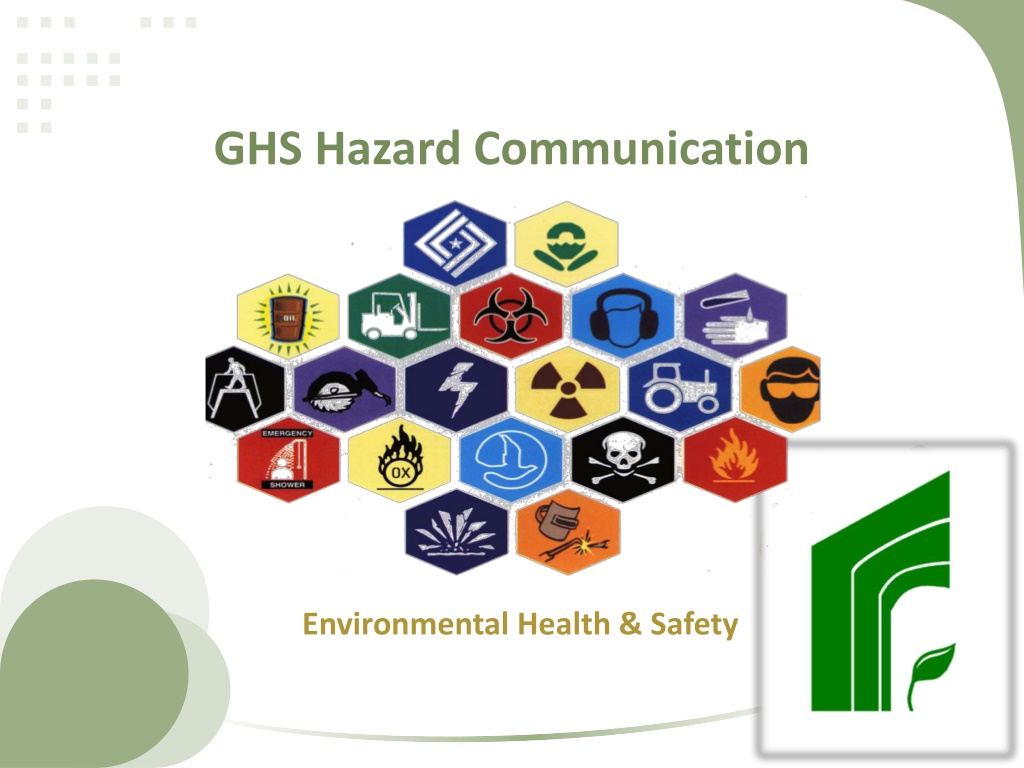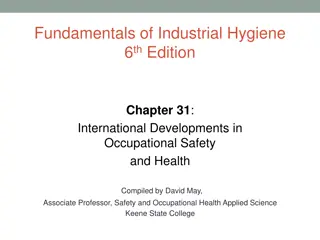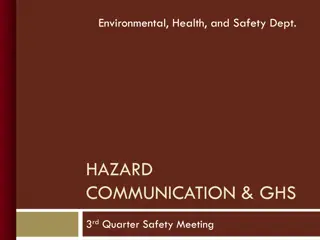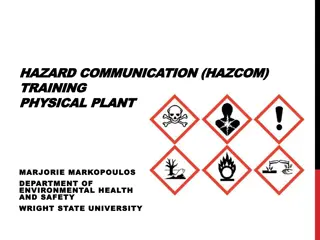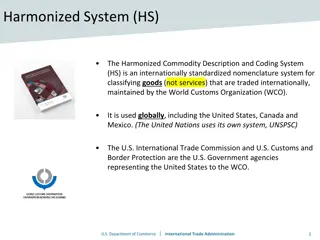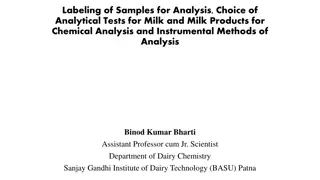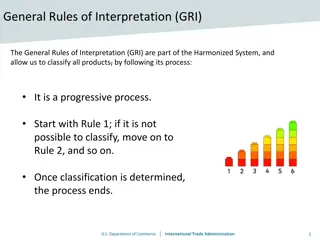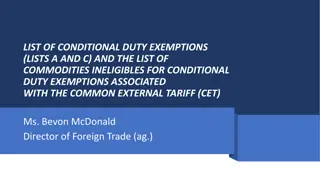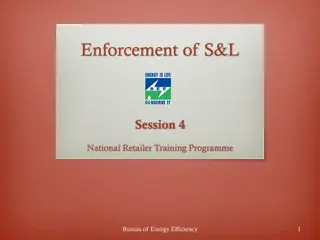Understanding GHS: The Globally Harmonized System of Classification and Labeling of Chemicals
The Globally Harmonized System (GHS) is a standardized approach to classifying and labeling chemicals, offering workers the right to understand hazards. It enhances cross-border communication, reduces confusion, and ensures consistent information. Major changes in GHS labels and Safety Data Sheets improve hazard communication. Explore GHS symbols, hazard classes, and the benefits of this harmonized system.
Download Presentation

Please find below an Image/Link to download the presentation.
The content on the website is provided AS IS for your information and personal use only. It may not be sold, licensed, or shared on other websites without obtaining consent from the author. Download presentation by click this link. If you encounter any issues during the download, it is possible that the publisher has removed the file from their server.
E N D
Presentation Transcript
GHS Hazard Communication Environmental Health & Safety
What is GHS? GHS stands for the Globally Harmonized System of Classification and Labeling of Chemicals. It is the new standard for hazard communication that gives workers the right to understand, rather than the original 1983 standard that gave workers the right to know.
What are the benefits of GHS? GHS provides a harmonized system for classifying and identifying hazardous chemicals according to their physical, health and environmental hazards. This newly defined system can be used and understood across international borders which improve the quality and consistency of hazardous information. It also helps reduce worker confusion and improves their understanding of the information being provided.
Major Changes in GHS Labels will now include a signal word, pictogram, hazard statement, and precautionary statement for each hazard class and category. Safety Data Sheets require a new format with sixteen different sections to ensure consistency and are formally known as a Material Safety Data Sheet (MSDS).
PROPERTIES Allow user to leave interaction: Show Next Slide Button: Completion Button Label: After viewing all the steps Show upon completion Next Slide
Examples of other GHS Labels These two labels illustrate the other formats that one can see when using hazardous chemicals. Even though the layout is different than one previously displayed the content still stays the same.
GHS Symbols & Hazard Classes Explosives Self Reactives Organic Peroxides Oxidizers Flammables Self Reactives Pyrophorics Self-Heating Emits Flammable Gas Organic Peroxides
GHS Symbols & Hazard Classes Gases Under Pressure Acute Toxicity (severe) Corrosives
GHS Symbols & Hazard Classes Irritant Dermal Sensitizer Acute Toxicity (harmful) Narcotic Effects Respiratory Tract Irritation Carcinogen Respiratory Sensitizer Reproductive Toxicity Target Organ Toxicity Mutagenicity Aspiration Toxicity Environmental Toxicity
GHS Safety Data Sheet The GHS Safety Data Sheet (SDS) provides comprehensive information on hazards in the workplace and offers advice on safety precautions. It has a format of sixteen defined sections to ensure consistency and understanding. A Safety Data Sheet is also formally known as a Material Safety Data Sheet or MSDS.
Sections 1-2 of a GHS SDS Section 1: Identification of the substance or mixture and of the supplier. Section 1 should consist of a product identifier (the same one used on the GHS label), supplier or manufacture details, recommendations and restrictions of use, and an emergency telephone number. Section 2: Hazards identification Consists of the GHS classification of the substance and/or mixture, as well as any national or local information. GHS label elements, such as symbols (can be provided with the written name of the symbol or pictogram), precautionary statements and other hazards which are not covered by the GHS can also be provided in this section.
Sections 3-4 of a GHS SDS Section 3: Composition/Information on ingredients Section 3 contains the chemical identity, common name and synonyms of the given substance and/or mixture. The chemical identity and concentration of all hazardous ingredients will be provided for all hazardous mixtures. CAS numbers, EC numbers, impurities and stabilizing additives should also be provided in this section as well. Section 4: First aid measures Consists of descriptions for necessary measures that are subdivided according to the most important symptoms/effects from different routes of exposure, such as, inhalation, skin and eye contact and ingestion.
Sections 5-8 of a GHS SDS Section 5: Firefighting measures Consists of suitable extinguishing media and special protective equipment and precautions for firefighters, as well as any specific hazards arising from the chemical. Section 6: Accidental release measures Includes personal precautions, protective equipment and emergency procedures. Environmental precautions, methods and materials for containment and cleaning up are available in this section as well. Section 7: Handling and storage Section 7 contains precautions for safe handling and conditions for safe storage, including any incompatibilities with other chemicals.
Section 8 of a GHS SDS Section 8: Exposure controls/personal protection Includes control parameters, such as, occupational exposure limits or biological limits. Appropriate engineering controls and individual protection measures, such as protective equipment is provided in this section as well.
Sections 9-12 of a GHS SDS Section 9: Physical and chemical properties This section contains the physical and chemical properties, such as, appearance, odor, pH. level, melting point/freezing point and flash point Section 10: Stability and reactivity Contains information on the chemical stability and possible hazardous reactions. Section 11: Toxicological information Consist of a full and clear description of various health effects and the information one needs to know in order to identify the side effects. Section 12: Ecological information Includes any adverse effects on the environment such as ecotoxicity and degradability.
Sections 13-16 of a GHS SDS Section 13: Disposal considerations Include a description of waste remains and information on safe disposal. Section 14: Transport information Contains information such as the UN number, shipping name and the transport hazard class or classes. Section 15: Regulatory information Consists of any specific regulations for the identified product. Section 16: Other information Contains any other information, such as preparation and revision of the SDS.
PROPERTIES On passing, 'Finish' button: On failing, 'Finish' button: Allow user to leave quiz: User may view slides after quiz: User may attempt quiz: Goes to URL Close Window After user has completed quiz At any time Unlimited times
